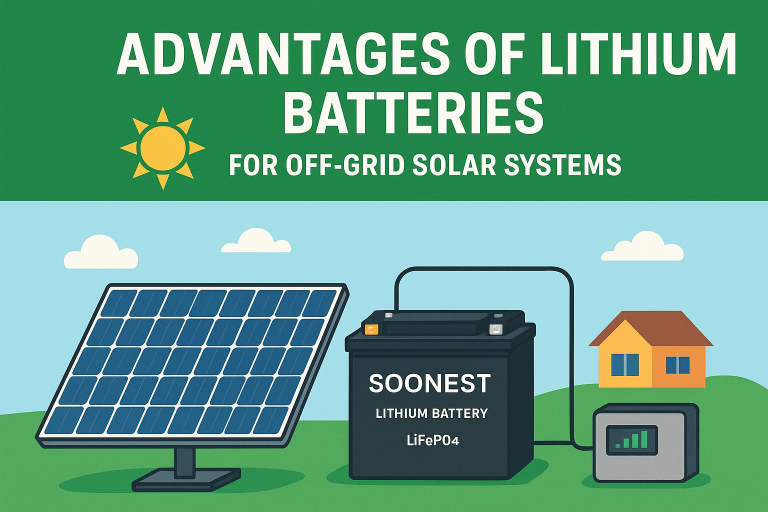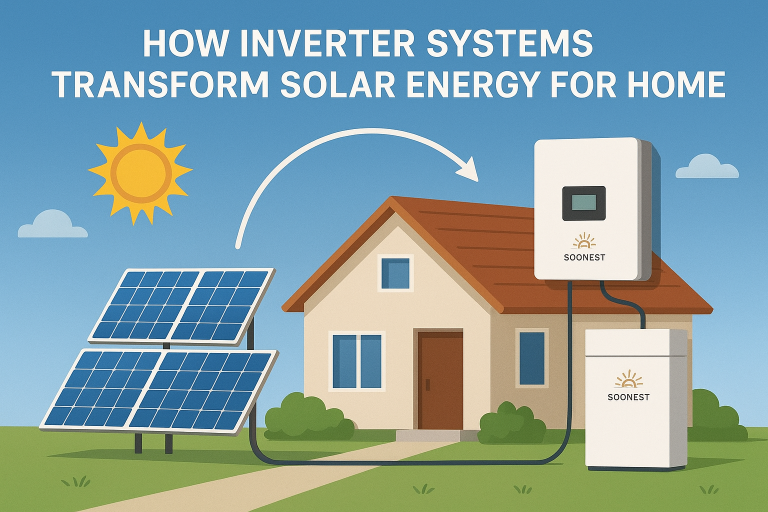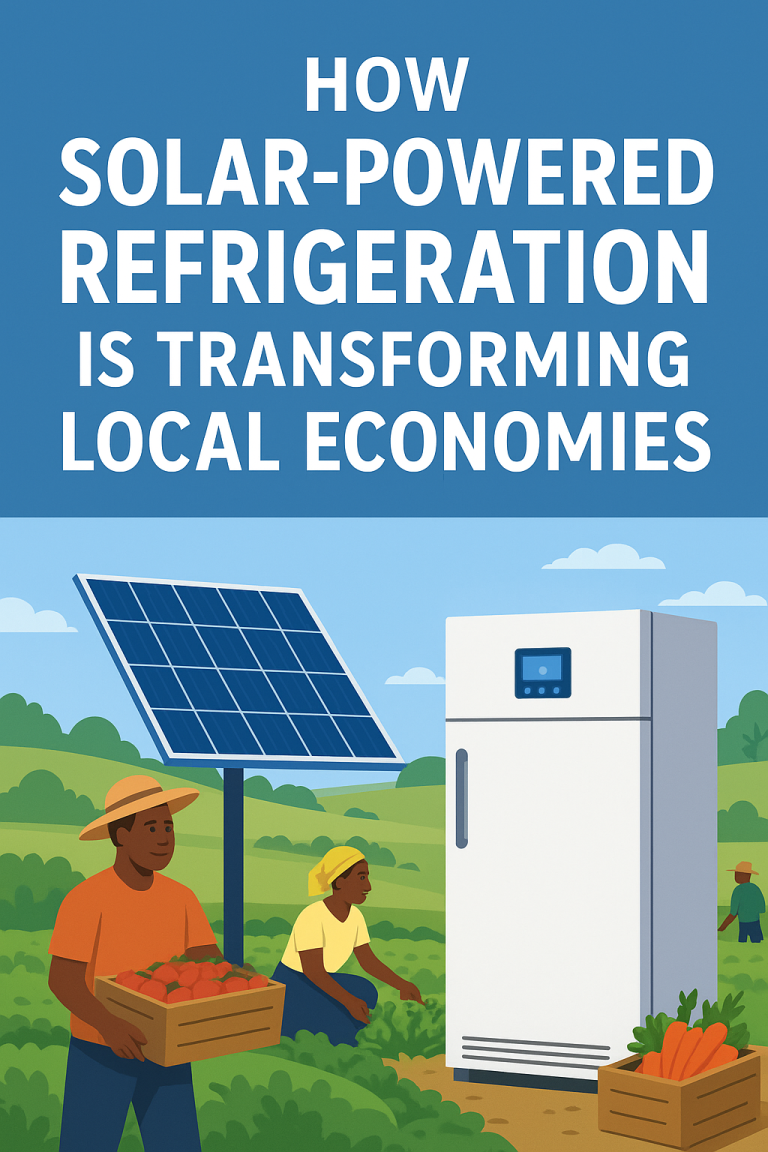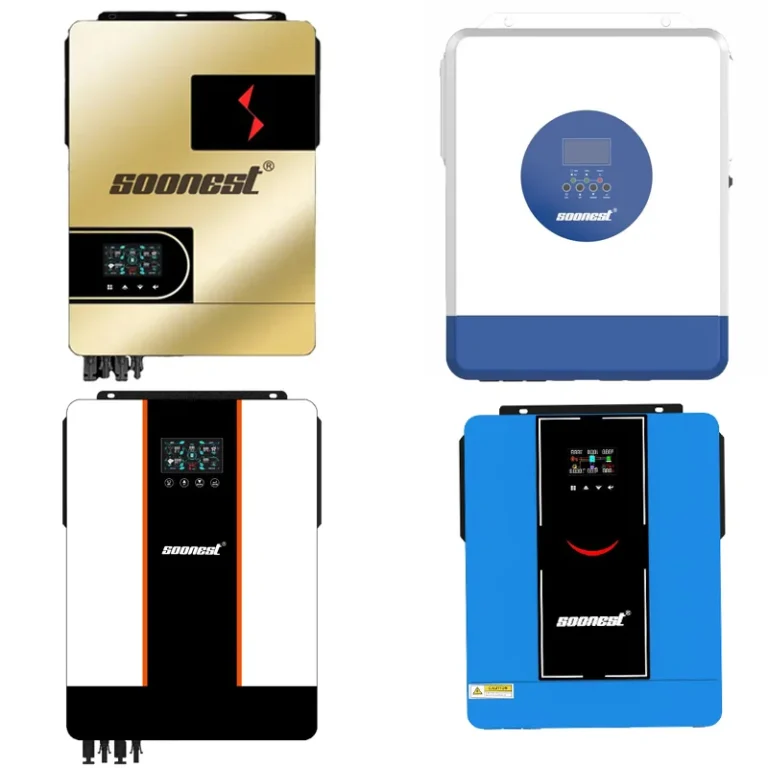Le passage à l’énergie solaire ressemble à un grand pas, n’est-ce pas ? Vous vous demandez probablement quels panneaux solaires fonctionneront le mieux pour votre maison ou votre entreprise. À BientôtChoisir la bonne configuration est énorme, surtout lorsque vous pensez à associer des panneaux avec batteries au lithium pour panneaux solairesLes panneaux solaires en silicium monocristallin et les panneaux solaires en silicium polycristallin sont les principaux acteurs, et ils sont assez différents dans leur apparence, leur performance et leur adaptation à vos besoins. Découpons-le afin que vous puissiez choisir celui qui vous convient.
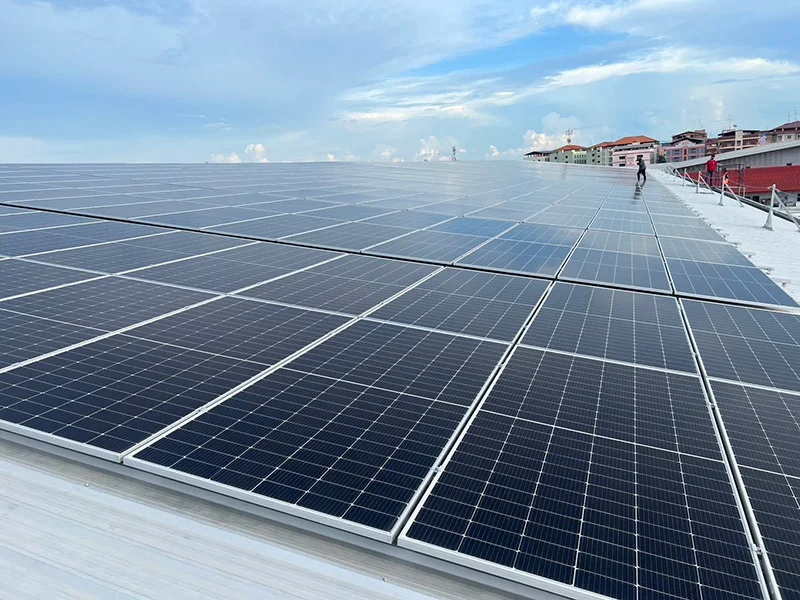
Caractéristiques de Panneaux solaires en silicium monocristallin
Design et caractéristiques esthétiques
Les panneaux solaires en silicium monocristallin, le type monocristallin, ont cette ambiance lisse et sombre. C'est parce qu'ils sont faits d'un seul cristal de silicium. Ils se mélangent directement dans les toits modernes, c'est pourquoi tant de propriétaires les aiment. Imaginez une voiture de panneaux solaires en silicium monocristallin élégant, ils ont le même look frais et propre. De plus, la couleur foncée absorbe mieux la lumière du soleil, de sorte qu'elles ne reflètent pas autant de lumière et ont l'air super élégant.
Metriques d'efficacité et de performance
Ces panneaux sont des champions dans la production d'énergie. Ils atteignent des taux d'efficacité de 18-22% grâce à leur silicium pur. Cela signifie qu’ils émettent plus d’électricité même si vous avez un espace sur le toit limité. Vous avez une petite maison ? Pas de problème. Ils tiennent également bien quand il est nuageux, de sorte que vous ne serez pas laissé dans l'obscurité les jours sombres.
Matériaux utilisés dans la fabrication
Les panneaux solaires en silicium monocristallin commencent avec du silicium monocristallin de première qualité, sculpté à partir d'un seul cristal. Cela réduit les défauts au minimum, laissant les électrons glisser facilement pour une meilleure efficacité. Ils sont souvent revêtus de couches anti-éblouissement et de verre résistant, de sorte qu'ils durent longtemps et attrapent autant de lumière solaire que possible.
Caractéristiques de Panneaux solaires en silicium polycristallin
Aspects visuels et apparence
Les panneaux solaires en silicium polycristallin, généralement polycristallin, ont un aspect de panneaux solaires en silicium polycristallin. Il provient de l'utilisation de multiples cristaux de silicium. Ils ne sont pas aussi polis que les panneaux solaires en silicium monocristallin, mais ils ont un certain charme. Pensez à eux comme une couette confortable et patchwork. Ils s’adaptent parfaitement aux granges, entrepôts ou maisons rurales où le style n’est pas la priorité absolue.
Niveaux d'efficacité comparés à Panneaux solaires en silicium monocristallin Panneaux
Les panneaux solaires en silicium polycristallin sont un peu moins efficaces, atteignant 15-18%. Les multiples cristaux créent de minuscules barrières qui ralentissent le flux d'électrons. Mais ne les comptez pas – ils sont solides pour les grandes installations où vous avez beaucoup d’espace à répartir.
Composition et processus de production
La fabrication de panneaux solaires en silicium polycristallin est plus simple. Ils fondent plusieurs cristaux de silicium ensemble, ce qui prend moins d'énergie que la fabrication de panneaux solaires en silicium monocristallin. Cela réduit les coûts, mais vous négociez un peu d'efficacité.
Comparaison des performances entre Panneaux solaires en silicium monocristallin et Panneaux solaires en silicium polycristallin
| Caractéristique | Panneaux solaires en silicium monocristallin | Panneaux solaires en silicium polycristallin |
| Efficacité | 18-22% | 15-18% |
| Apparence | Lisse, sombre, uniforme | Panneaux solaires en silicium polycristallin, moins uniformes |
| Coût | Plus élevé ($0.80-$1.20/W) | Plus bas ($0.60-$0.90/W) |
| Durée | Forte (25-30 ans) | Forte (25-30 ans) |
| Espace nécessaire | Moins d'espace nécessaire | Plus d'espace nécessaire |
Différences dans l'efficacité de conversion énergétique
Les panneaux solaires en silicium monocristallin sont les gagnants ici. Leur configuration monocristalline signifie que moins d'énergie est gaspillée. Par exemple, un panneau solaire en silicium monocristallin de 400W prend moins d'espace qu'un panneau solaire en silicium polycristallin avec la même puissance. Si votre toit est sur le côté plus petit, les panneaux solaires en silicium monocristallin sont votre meilleur pari.
Comparaison des coûts entre Panneaux solaires en silicium monocristallin et Panneaux solaires en silicium polycristallin Panneaux
Les panneaux solaires en silicium polycristallin sont plus faciles sur votre portefeuille, coûtant 10 à 20% de moins car ils sont plus simples à fabriquer. Mais les panneaux solaires en silicium monocristallin, comme notre Bientôt MONO Panneaux solairespeut vous économiser plus au fil du temps. Leur efficacité les rend dignes du coût initial supplémentaire pour certaines personnes.
Facteurs de durabilité et de longévité
Les deux types sont conçus pour durer, en restant pendant 25 à 30 ans. La plupart viennent avec la promesse qu’ils continueront à travailler à 80% après 25 ans. Les panneaux solaires en silicium monocristallin peuvent avoir un léger bord dans les endroits chauds - ils gèrent mieux la chaleur, de sorte qu'ils ne perdent pas d'efficacité aussi rapidement.
Préférences esthétiques et choix d'installation
Si vous voulez que votre maison ait l'air nette, les panneaux solaires en silicium monocristallin sont le chemin à suivre. Ils sont élégants et modernes. Panneaux solaires en silicium polycristallin? Il s’agit plus de faire le travail que d’avoir l’air sophistiqué. La forme de votre toit et l’endroit où vous les installez jouent également un rôle dans la décision.
Facteurs à considérer lors du choix entre Panneaux solaires en silicium monocristallin et Panneaux solaires en silicium polycristallin
Installation Environnement et adaptabilité climatique
Où vous vivez compte. Les panneaux solaires en silicium monocristallin brillent dans des endroits nuageux ou ombragés, parfaits pour des endroits comme le Nord-Ouest du Pacifique. Les panneaux solaires en silicium polycristallin aiment les zones largement ouvertes et ensoleillées - pensez au Texas ou à l'Arizona. Vérifiez votre météo locale et tous les arbres ou bâtiments qui pourraient jeter de l'ombre.
Considérations budgétaires pour les consommateurs
Vous avez un budget serré ? Les panneaux solaires en silicium polycristallin sont moins chers à l'avance. Mais si vous pouvez dépenser un peu plus, les panneaux solaires en silicium monocristallin peuvent vous faire économiser de l'argent sur la route parce qu'ils produisent plus d'énergie. C'est comme choisir entre une voiture de base et une voiture avec un meilleur kilométrage au gaz.
Compatibilité avec les batteries au lithium pour les panneaux solaires
Les deux panneaux jouent bien avec batteries au lithiumCes batteries stockent de l'énergie supplémentaire pour lorsque le soleil n'est pas sorti. Les panneaux solaires en silicium monocristallin peuvent les remplir plus rapidement puisqu'ils produisent plus d'énergie, mais les panneaux solaires en silicium polycristallin fonctionnent très bien aussi. Cette configuration est idéale pour sortir du réseau ou couper votre facture d'électricité.
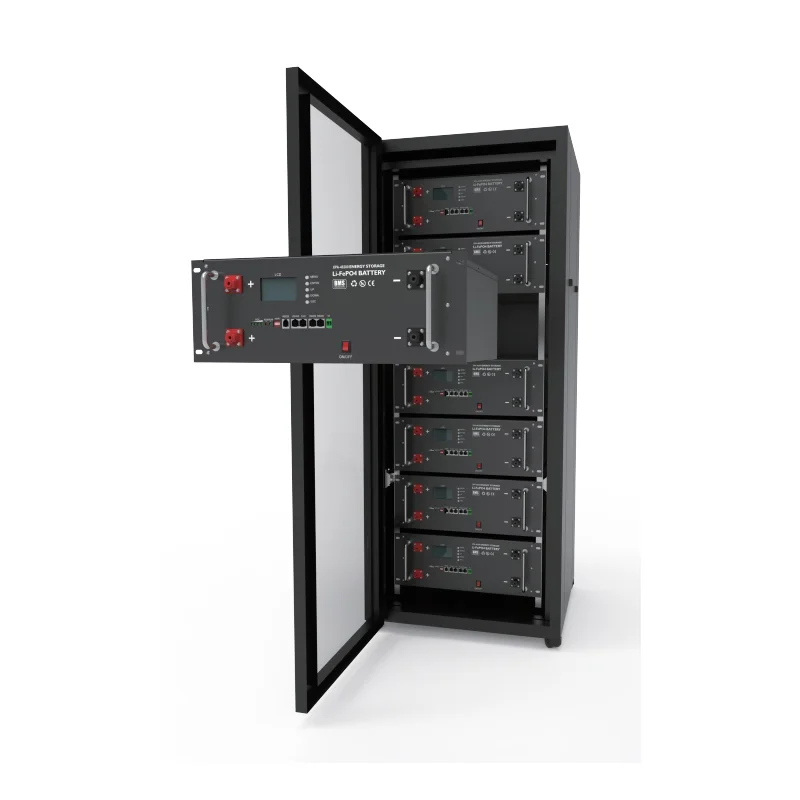
Choisissez entre Panneaux solaires en silicium monocristallin et Panneaux solaires en silicium polycristallin
Considérez votre budget
Regardez attentivement votre portefeuille. Les panneaux solaires en silicium polycristallin sont géniaux pour les grands projets sur un budget. Les panneaux solaires en silicium monocristallin coûtent plus à l’avance, mais peuvent payer si vous pensez à long terme.
Évaluez vos besoins énergétiques
Combien d'électricité utilisez-vous ? Si votre maison est toujours bourdonnée d’appareils électroménagers, l’efficacité supérieure des panneaux solaires en silicium monocristallin est un sauveur de vie. Pour les ménages plus petits, les panneaux solaires en silicium polycristallin peuvent être abondants.
Prendre en compte les préférences esthétiques
Pensez au curb appeal. Les panneaux solaires en silicium monocristallin donnent à votre maison un look moderne et haut de gamme. Les panneaux solaires en silicium polycristallin sont plus pratiques, comme un camion de travail fiable. Pour quelle vibe allez-vous ?
Avantages à long terme
Les panneaux solaires en silicium monocristallin sont souvent en avance à long terme. Ils produisent plus d'énergie et durent aussi longtemps que les panneaux solaires en silicium polycristallin. Associez-les à nos batteries au lithium et vous disposez d’un système qui garde vos lumières allumées, sous la pluie ou la brillance.
Pourquoi choisir SOONEST comme votre fournisseur fiable de panneaux solaires?
Chez SOONEST, nous voulons vous aider à passer au solaire en toute confiance. Voici pourquoi nous pensons que vous aimerez travailler avec nous.
Engagement envers des produits de qualité
Nous testons chaque panneau et batterie comme fou pour nous assurer qu'ils sont de premier ordre. Vous obtenez un équipement conçu pour durer et fonctionner, peu importe quoi.
Gamme d'options adaptées aux besoins des consommateurs
Que vous recherchiez des panneaux monocristallins de haute puissance ou des batteries au lithium robustes, nous avons quelque chose pour chaque budget et objectif. Nous sommes comme le magasin de bonbons solaires - choisissez ce que vous aimez.
Excellents services d'assistance à la clientèle
Notre équipe a votre dos. De choisir les bons panneaux à les installer, nous sommes là pour le rendre facile. Vous avez des questions ? Contactez-nousNous sommes heureux de chatter.
Conclusion : Prendre une décision éclairée sur la sélection des panneaux solaires
Le choix entre les panneaux solaires en silicium monocristallin et les panneaux solaires en silicium polycristallin se résume à ce dont vous avez besoin: votre budget, la quantité d'énergie que vous utilisez, la façon dont vous voulez que votre maison ressemble et où vous vivez. Les panneaux solaires en silicium monocristallin sont efficaces et élégants, idéaux pour les petits toits ou les maisons de luxe. Les panneaux solaires en silicium polycristallin sont économiques et fiables pour les installations plus grandes. Quoi qu'il en soit, l'ajout de batteries au lithium vous rend plus indépendant de l'énergie. Chez SOONEST, nous sommes ravis de vous aider à trouver la solution idéale pour un avenir plus écologique.
FAQ À propos Panneaux solaires en silicium monocristallin et Panneaux solaires en silicium polycristallin
Q1 : Quelle est la principale différence entre Panneaux solaires en silicium monocristallin et Panneaux solaires en silicium polycristallin?
A: Les panneaux solaires en silicium monocristallin sont monocristallins, faits d'un seul cristal de silicium. Ils sont plus efficaces (18-22%) et ont un aspect lisse et sombre. Les panneaux solaires en silicium polycristallin sont polycristallins, utilisant plusieurs cristaux. Ils sont un peu moins efficaces (15-18%) et ont une apparence de panneaux solaires en silicium polycristallin.
Q2 : sont Panneaux solaires en silicium monocristallin plus efficace que Panneaux solaires en silicium polycristallin?
R: Oui, les panneaux solaires en silicium monocristallin dépassent généralement les panneaux solaires en silicium polycristallin. Ils transforment 18-22% de la lumière solaire en électricité, tandis que les panneaux solaires en silicium polycristallin atteignent 15-18%. Le silicium plus pur dans les panneaux solaires en silicium monocristallin fait la différence.
Q3 : Les deux types de panneaux solaires peuvent-ils fonctionner avec des batteries au lithium?
A : Tout à fait. Les panneaux solaires en silicium monocristallin et les panneaux solaires en silicium polycristallin s'adaptent parfaitement aux batteries au lithium. Ils stockent de l'énergie comme des champions. Les panneaux solaires en silicium monocristallin peuvent se charger plus rapidement parce qu'ils produisent plus d'énergie, mais les deux types s'adaptent parfaitement aux systèmes de batteries modernes.

